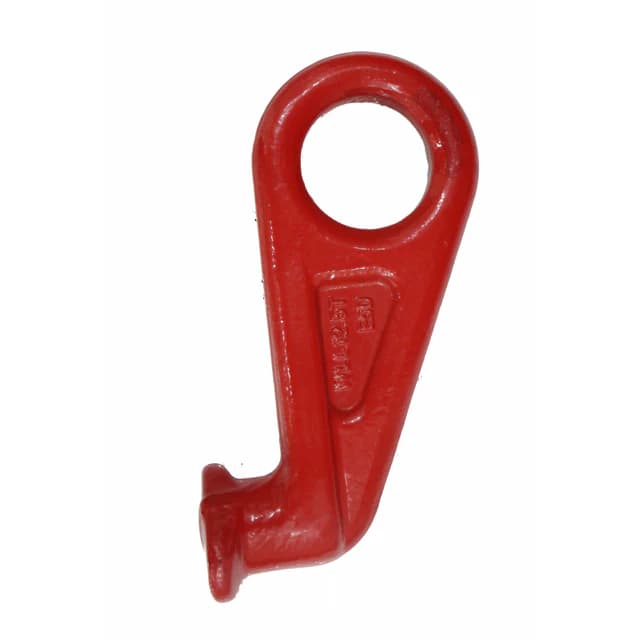In modern industrial operations, the safe and efficient handling of heavy containers is crucial for productivity and worker safety. Container lifting lugs play a vital role in achieving this goal. These devices provide secure attachment points for lifting equipment, enabling the controlled movement of heavy containers in warehouses, ports, and construction sites. Understanding the benefits and proper use of container lifting lugs is essential for industries that handle large loads regularly.
Understanding Container Lifting Lugs
What Are Container Lifting Lugs?
Container lifting lugs are reinforced attachment points welded or bolted onto containers or heavy equipment. They serve as secure connection points for lifting devices such as cranes, hoists, and chains. By providing a strong and reliable interface, lifting lugs allow operators to safely lift, move, and position heavy containers without risking damage to the load or equipment.
Key Components
- Body of the Lug: Typically made from high-strength steel, it provides durability and withstands heavy forces during lifting.
- Attachment Hole: A central hole or eye through which hooks, shackles, or lifting chains are connected.
- Mounting Base: The part that is welded or bolted to the container, ensuring stability during lifting.
- Reinforcements: Additional plates or gussets may be added to increase strength and distribute stress.
Advantages of Using Lifting Lugs
- Provides a secure and standardized lifting point
- Enhances safety during heavy lifting operations
- Reduces the risk of container damage
- Facilitates compliance with industrial safety standards
Industrial Applications of Container Lifting Lugs
Port and Shipping Operations
In ports and shipping yards, containers are frequently moved using cranes and hoists. Container lifting lugs ensure that containers can be lifted safely and efficiently, reducing the time needed for loading and unloading. They also help in aligning containers accurately on ships or storage yards.
Warehousing and Logistics
Warehouses that handle large containers benefit from lifting lugs by improving workflow and reducing manual labor. Lifting lugs allow for mechanized handling, which increases speed and minimizes the risk of injury for workers.
Construction and Heavy Equipment Handling
Construction sites often involve moving prefabricated structures, heavy machinery, or materials stored in containers. Lifting lugs provide reliable attachment points, ensuring controlled lifting and positioning, even in challenging environments.
Industrial Manufacturing
In manufacturing plants, container lifting lugs are used to move heavy molds, equipment, and raw materials. These lugs improve efficiency by allowing precise and safe lifts, reducing downtime and damage.
Factors to Consider When Using Container Lifting Lugs
Load Capacity
Each lifting lug has a specific Working Load Limit (WLL). Operators must ensure that the lifting lug’s capacity meets or exceeds the weight of the container being lifted. Exceeding the WLL can lead to equipment failure and serious accidents.
Material Strength
Lifting lugs are typically constructed from high-strength steel to withstand heavy loads. Choosing the right material and grade ensures durability, especially for frequent or heavy-duty lifting operations.
Proper Installation
Lifting lugs must be correctly welded or bolted to the container according to manufacturer guidelines. Poor installation can compromise safety and reduce lifting efficiency. Reinforcements or gussets may be used to distribute stress more evenly.
Lifting Angle
The angle at which the load is lifted affects the stress on the lifting lug. Operators should ensure that lifts are performed vertically or within safe angle limits to avoid overloading the lug.
Inspection and Maintenance
Regular inspections are essential to detect wear, corrosion, or deformation. Maintenance ensures that lifting lugs remain reliable and safe over their lifespan. Damaged or worn lugs should be replaced immediately.
Benefits of Using Container Lifting Lugs
Enhanced Safety
By providing standardized attachment points, lifting lugs reduce the risk of slippage or accidental drops. Workers can operate lifting equipment with confidence, knowing that the load is secure.
Increased Efficiency
Lifting lugs streamline lifting operations, allowing for quicker loading and unloading of containers. This improves overall workflow in ports, warehouses, and industrial sites.
Protection of Equipment and Cargo
Properly used lifting lugs prevent damage to containers, cargo, and lifting equipment. They distribute load forces evenly, minimizing stress points and prolonging the life of the equipment.
Compliance with Safety Standards
Many industrial safety standards require the use of secure lifting points when handling heavy containers. Using certified container lifting lugs ensures compliance and reduces liability.
Versatility
Lifting lugs can be used with a variety of lifting equipment, including cranes, hoists, shackles, and chain slings. This versatility makes them suitable for a wide range of industrial applications.
Best Practices for Using Container Lifting Lugs
Regular Inspection
Check for signs of wear, cracks, or corrosion before every lift. Ensure that bolts or welds are secure and that there are no visible defects.
Use Correct Lifting Equipment
Select hooks, shackles, and chains that match the capacity and design of the lifting lug. Using incorrect equipment can compromise safety.
Maintain Proper Lifting Angles
Ensure that the load is lifted within recommended angles to avoid overloading the lug. Avoid side pulling or dragging, which can damage the lug or container.
Train Personnel
Operators should receive proper training on the use of lifting lugs and associated lifting equipment. Knowledge of safe lifting practices reduces accidents and improves efficiency.
Record Keeping
Maintain records of inspections, maintenance, and usage. This ensures accountability and helps identify potential issues before they lead to failure.
Conclusion
Container lifting lugs are an essential component of industrial lifting operations. They provide secure attachment points for heavy containers, enhancing safety, efficiency, and equipment longevity. By considering load capacity, material strength, installation, and proper use, industries can maximize the benefits of container lifting lugs while minimizing risk. For high-quality container lifting lugs and a wide range of lifting solutions, UK Lifting Store offers reliable options for all industrial applications.





Comments